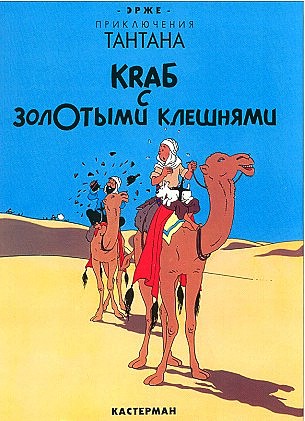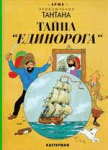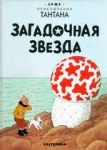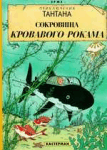| TINTIN LANGUAGES | |
| AFRIKAANS | |
| ALGUERES | |
| ALSATIAN | |
| ARABIC | |
| ASTURIAN | |
| BASQUE | |
| BERNESE | |
| BENGALI | |
| BRETON | |
| BULGARE | |
| CAMBODIAN | |
| CATALAN | |
| CHINESE | |
| CORSICAN | |
| CZECH | |
| DANISH | |
| DUTCH | |
| ENGLISH | |
| ESPERANTO | |
| FARSI | |
| FAEROESE | |
| FINNISH | |
| FRENCH | |
| FRIESIAN | |
| GALICIAN | |
| GALLO | |
| GAUMIAN | |
| GERMAN | |
| GREEK | |
| HEBREW | |
| HUNGARIAN | |
| ICELANDIC | |
| INDONESIAN | |
| ITALIAN | |
| JAPANESE | |
| KOREAN | |
| LATIN | |
| LUXEMBOURGER | |
| MALAYALAM | |
| NORWEGIAN | |
| OCCITAN | |
| PICARDY | |
| POLISH | |
| PORTUGUESE | |
| ROMANSCH | |
| RUSSIAN | |
| SERBO-CROAT | |
| SINHALESE | |
| SLOVAK | |
| SPANISH | |
| SWEDISH | |
| TAHITIAN | |
| TAIWANESE | |
| THAI | |
| TIBETAN | |
| TURKISH | |
| VIETNAMESE | |
| WELSH | |
| TOTAL 60 VERIFIED LANGUAGES | |
| RUMOURS | |
| MIRANDES | |
|
MONEGASCO |
|
| PROVENÇAL | |
| RUANDES | |
| MONEGASCO | |
| LINKS | CRAB MENÚ | CASTAFIORE MENU |
 |
RUSSIAN | |||||||||||
|
||||||||||||
|
Russian is the most
important of the Slavic languages and now one of the major
languages of the world. The emergence of the Soviet Union in the
postwar period as a major world power, coupled with tmpressive
achievements in science and technology, has significantly
increased the interest in and the study of Russian in recent
years. With English, French, Spanish, Chinese, and Arabic, Russian
is one of the six official languages of the United Nations.
Of the 150 million people in the Russian Federation, about 125 million are native Russians, with many members of other nationalities speaking the language with varying degrees of fluency. About 30 million Russians also live in the newly independent states that were once part of the Soviet Union, with the numbers by country as follows: Ukraine — 12 million; Kazakhstan — 8 million; Belarus — 3˝ million; Uzbekistan — 2˝ million; Latvia — one million; Kyrgystan — one million; Moldova — 600,000; Azerbaijan — 500,000; Turkmenistan — 400,000; Lithuania — 350,000; Armenia — 50,000. Latest figures also show 250,000 Russian speakers in the United States and 40,000 in Canada. Russian is written in the Cyrillic alphabet, whose origin dates from the 9th century. Its creators were two missionaries from Greece, the brothers Cyril and Methodius, who based it largely on the Greek. Though appearing formidable to one who has never studied it, the Russian alphabet is not difficult to learn. A number of letters are written and pronounced approximately as in English (A, K, M, 0, T), while others, though written as in English, are pronounced differently (B = V, E = YE, Ë = YO, H = N, P = R, C = S, X = KH). If learning the Russian alphabet is not especially difficult, learning to speak the language is something else again. Russian is notorious for its long personal and place names (e.g., Nepomnyashchiy, Dnepropetrovsk), for its long words (upotrehienie—use, dostoprimchatelnosti—sights, zhenonenavistniehestvo—misogyny), and for its unusual con-sonant clusters (vzvod—platoon, tknut'—to poke, vstreeha—meeting). Nouns, pronouns, adjectives, and numbers are declined in six cases: nominative, genitive, dative, accusative, instrumental, and preposi-tional or locative. The Russian verb has two aspects, each represented by a separate infinitive-the imperfective to indicate a continuing action, and the perfective to indicate an action already completed or to be completed. The genders number three, masculine, feminine, and neuter, with a different declensional pattern for each (though the neuter is similar to the masculine), and a fourth one for the plural. The stress in Russian is particularly difficult, impossible to predict in an unfamiliar word, and frequently shifting in the course of declensions or conjugations. Yet despite these difficulties, Russian is being mastered by an increasing number of students in many different countries. They have found it worth the effort for many reasons, not the least of which is the great body of Russian literature which ranks among the most brilliant in the world. English words of Russian origin include vodka, tsar, samovar, ruble, pogrom, troika, steppe, and tundra. The word sputnik entered the language in 1957.
|
|
PUBLISHER |
|
ONLINE SHOPING |



|
LINKS
|
|
|
I'VE GOT THIS ONE | ! WANTED! |
